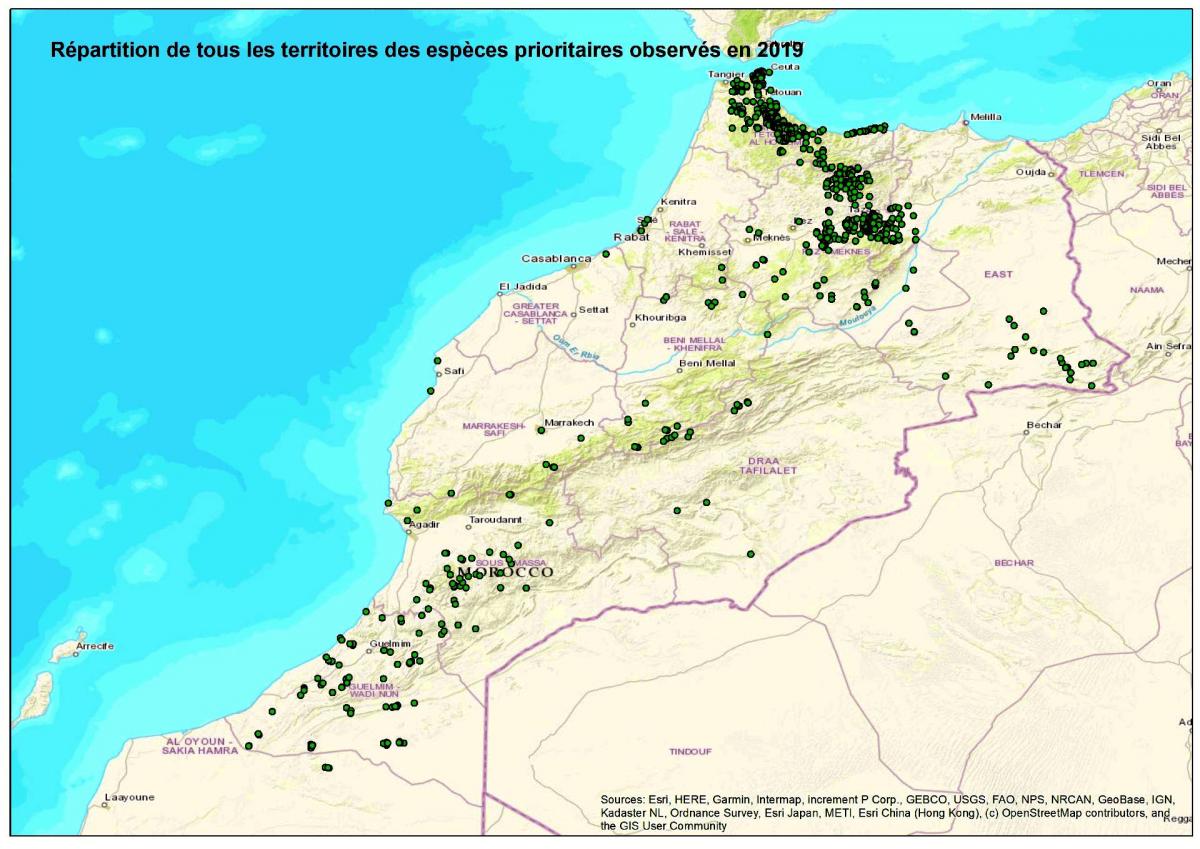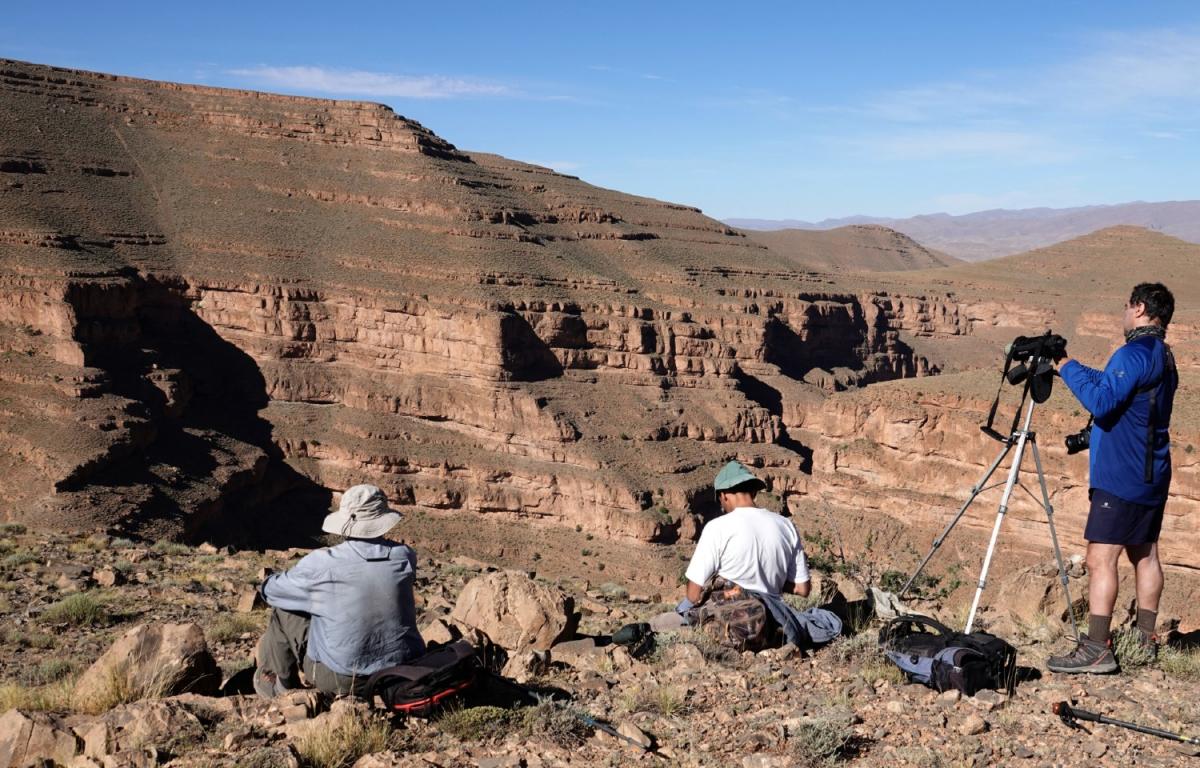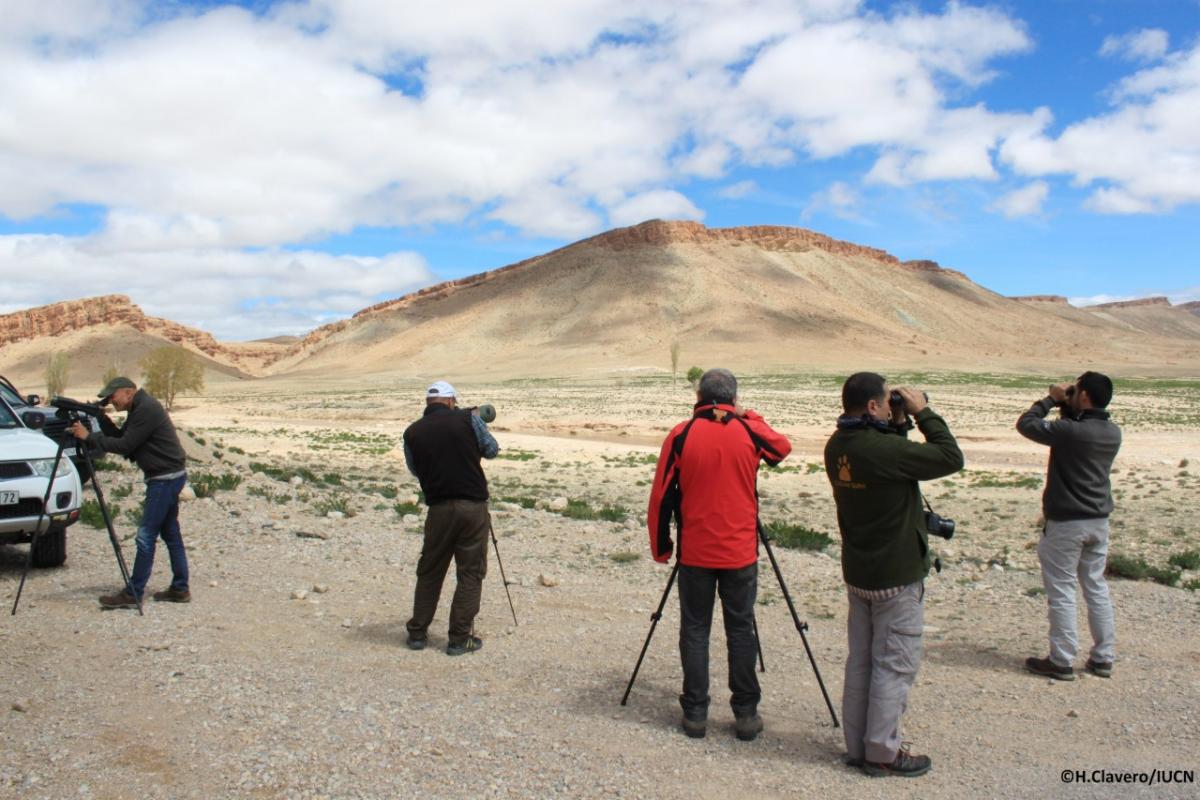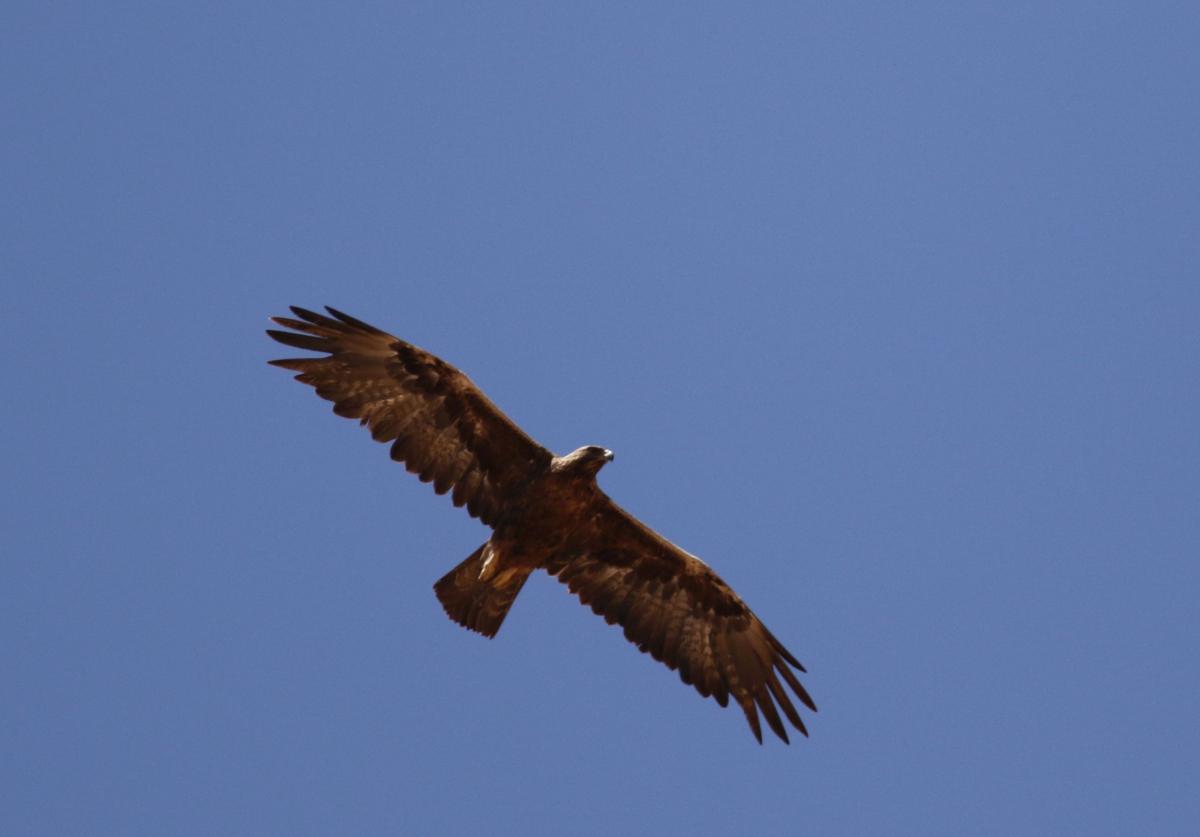Mortality hotspots for birds of prey in Morocco revealed by first study on conservation status
The first national census campaign of diurnal cliff-nesting raptors in Morocco is the result of a collaboration between 17 national and international institutions
(in French)
The report presents the results of the first national census of diurnal cliff-nesting raptors in Morocco carried out in 2019. It provides a first clear picture of the geographical distribution and status of birds of prey populations in Morocco.
Implemented by the Department of Water and Forests of Morocco and the IUCN Centre for Mediterranean Cooperation with the technical support of the regional government of Andalusia and the collaboration of experts and institutions from both shores of the Mediterranean, the initiative is contributing to broaden knowledge on the populations of these species and their threats, as an example of cross-border cooperation and collaborative work between the IUCN Secretariat and its member organizations..
Throughout 2019, 12 field missions and several field trips have been undertaken, with the participation of several Moroccan and foreign organisations and experts. In this first campaign, the census focused on large diurnal raptors threats affecting them.
The main targeted species were the Golden Eagle, Bonelli's Eagle, the Long-legged Buzzard, the Lanner Falcon, Peregrine Falcon / Barbary F., the Lesser Kestrel, the Bearded Vulture, the Griffon Vulture, the Rüppell's Vulture, the Egyptian Vulture and the Osprey.
“Indeed, this group of birds suffers the harmful effects of various types of threats such as the fragmentation and destruction of their habitats, poaching, the impact of electrical infrastructures and the uncontrolled use of poison, pesticides, chemicals and other pollutants,” explains Catherine Numa, coordinator of the IUCN Mediterranean Species Programme.
"The results of this experience are considered very satisfactory, both on a technical and scientific level, but also at the human and institutional level, thanks to the participation of several organisations including the Moroccan and Andalusian administrations and Moroccan and international conservation NGOs ", underlined Zouhair Amhaouch, Head of the Division of Parks and Natural Reserves in the Moroccan Department of Water and Forests. "The initiative has also strengthened the working network on the conservation of raptors in Morocco and the capacities of the main actors concerned".
Mortality hotspots
Preliminary works on the incidence of threats for birds of prey at the regional level revealed the existence of significant sources of mortality linked to electrocution in hazardous power lines.
This field study at a national level allowed to identify 766 diurnal cliff-nesting raptors breeding sites, 712 of which are with certainty breeding sites of the targeted species, and more than 620 could be confirmed as occupied territories in 2019. During the various missions, non-natural mortality factors were also studied, covering almost 400 km of power lines. In the course of these inspections, the remains of at least 211 birds were spotted under power lines, revealing new mortality hotspots.
Morocco is a key territory for birds of prey. Not only does it host a significant number of these species, but it is also part of the flyway and home range of many raptors. This territory is also a place for interaction between the populations of northern Africa and southern Europe. More than 40 species of raptors, both breeding and migratory, have been observed on Moroccan territory, several of which would need planned conservation measures as is the case for the Bearded vulture (Gypaetus barbatus) or the Egyptian vulture (Neophron percnopterus).







